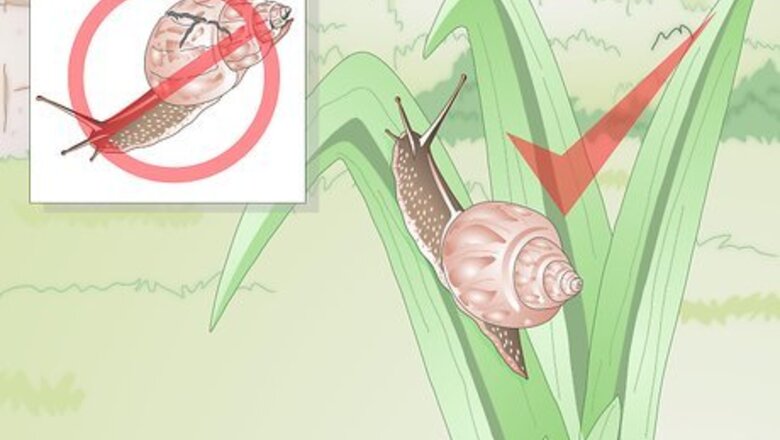
views
Obtaining a Freshwater Snail
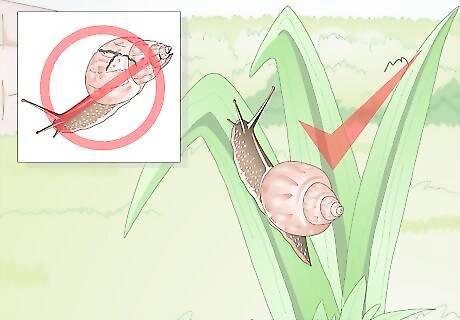
Look for a healthy snail. Signs that your snail is healthy include a clean appearance and healthy coloring. Healthy coloring varies from species to species. The snail’s shell should be free of cracks. Most importantly, the snail should be active and moving about. Do not buy freshwater snails that are housed in a tank with many dead or unhealthy snails. Chances are that all the snails in the tank are unhealthy to some degree. Similarly, avoid buying a snail from an overcrowded tank.

Do not obtain a snail from its natural environment. Snails are commonly found in rice paddies, rivers, and streams around the world. However, these snails are vectors for a wide variety of illnesses which can infect humans and animals. Never remove a freshwater snail from its natural habitat and place it in your aquarium. You run the risk of infecting not just you, but the other fish and creatures in your aquarium. Even snails that you obtain from a pet store should be handled with care. Always wash your hands after handling your snail or coming into contact with aquarium water. Do not touch your eyes or mouth after touching your snail or other aquarium creatures.
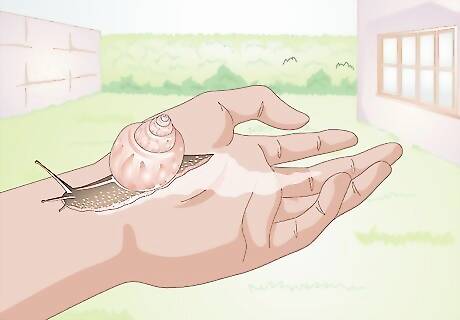
Be sure you’re ready for a freshwater snail. Freshwater snails are often considered irritating additions to an aquarium. They reproduce quickly and can often overrun a tank. They also eat live plants. If you do not have the time to manage your snail population and keep your tank in order, you should reconsider obtaining a freshwater snail. Many freshwater snails can reproduce asexually, so don’t be surprised if your one snail suddenly becomes five or six. However, there are many positive aspects to having snails. They can consume decaying plant matter, and can keep your tank clean if housed with fish.
Setting Up a Habitat
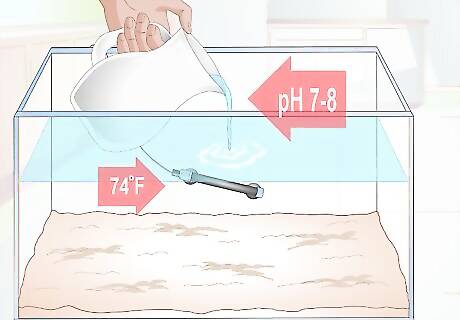
Ensure your water is appropriate. Freshwater snails prefer water between 65–83°F with a pH of 7–8. Monitor your pH and temperature levels with an aquarium monitor. Aquarium monitors are small devices with outward-facing digital displays that you install inside your aquarium to inform you of your tank’s temperature and pH level. If you’re having trouble getting your water warm enough, consider investing in either a heat lamp or an under-tank heater. Both are available at your local pet store. If you’re having trouble getting your tank’s pH levels right, talk to your local aquarist or pet store proprietor. There are various compounds available to adjust pH levels The water should be completely free of salt, and should never be treated with any copper-based compound.
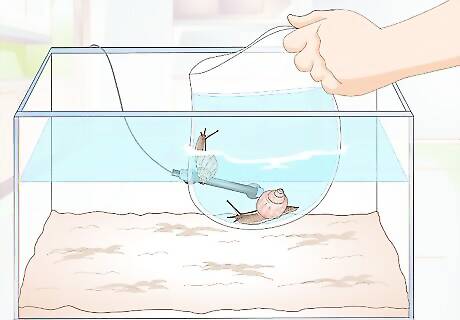
Introduce your snail to the tank gradually. Snails are very sensitive to environmental disruptions. Sudden, dramatic changes to the quality or temperature of its water can result in stress. In order to make the transition from its original tank to its new tank as smooth as possible, allow your snail to adjust to the new tank over a long period. Fill a small plastic bag with water from your snail’s tank. Float the bag in the tank you’re transferring the snail to for about 20 minutes. This will help the water in the bag adjust to the temperature in the snail’s new tank. Pour a bit of the water in the bag out. Be careful not to pour the snail out with the water. Fill the bag back up with water from the tank you’re transferring the snail to. Float the bag in the tank for another 10 to 20 minutes. Use a thermometer to check the temperature of the water in the tank against the temperature of the water in the bag. If the temperatures are the same, remove the snail from the bag and add it to the new aquarium. If the temperatures are not the same, float the bag in the tank for another 10-20 minutes until the temperatures are aligned.
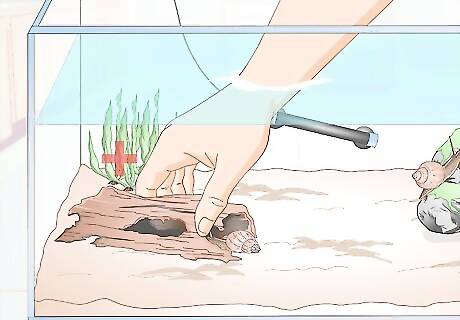
Include decor. Snails like dark places, and you may see your snails congregating in shaded areas of your tank. If you wish, provide a small overhang or a plastic fish hut (available at local pet stores) that your snail can access. You can also provide darkness with some real or artificial plants. Your snail might also like to climb on and explore artificial rocks. Keep in mind that your snail will probably eat live plants, so you’ll have an added expense if you wish to continually introduce new live plants to your aquarium.
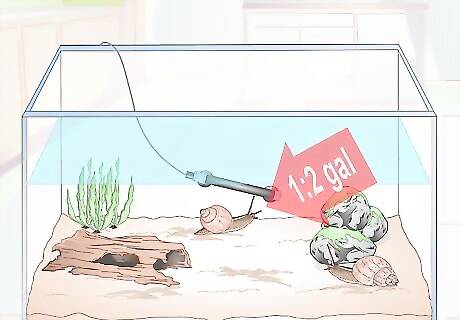
Give your snail enough room. Generally, you can adequately house one snail for every two gallons of water. In other words, if you have six-gallon aquarium, you can comfortably house three freshwater snails in it. However, the specific spatial requirements of a freshwater snail depends on its species. Pond snails require two gallons of water per twelve individuals. Ramshorn snails require two gallons of water per six individuals. Mystery snails require ten gallons of water per six individuals. Snails lay their eggs out of the water. If you want your snails to reproduce, leave at least two to four inches of air between the lid of the aquarium and the top of the water.
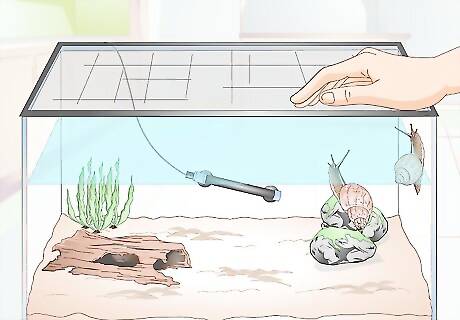
Keep a lid on your tank. Snails are excellent climbers. They can scale almost any surface, including the vertical glass of an aquarium tank. In order to keep your snail from escaping, keep a lid or cover on it. Some portion of the cover should be composed of mesh to allow air into the tank.
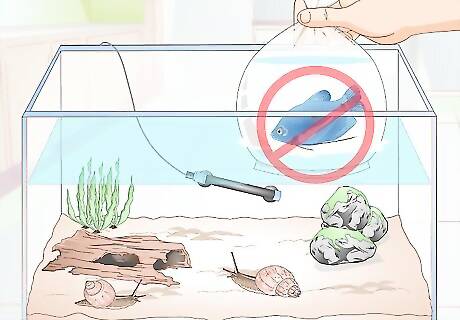
Be careful when choosing tankmates. Certain fish may want to eat your snail. Loaches, betta fish, and gouramis are notorious for eating snails. Catfish, cichlids, and pufferfish also find snails very tasty. Other fish like Siamese fighting fish enjoy eating snail eggs. Other snails and other freshwater fish (White Cloud Mountain minnows, for instance) make good tankmates for a freshwater snail.
Caring Over the Long Term
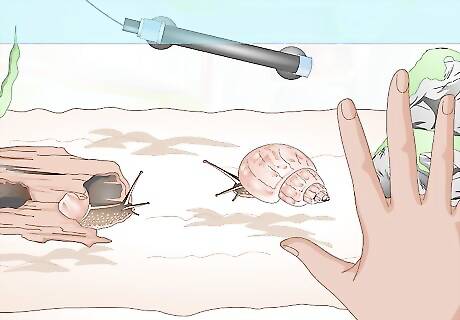
Be patient with your snail. When you first introduce a snail to a new environment, it might be shy. The snail might pull its body into its shell for several days as it adjusts to its new environment. This behavior is a stress response, and is normal for a snail that transitions to a new habitat. You should be alarmed if the snail is contained within its shell and you can see the “door” to its shell (the operculum) is open. This could indicate sickness or death.
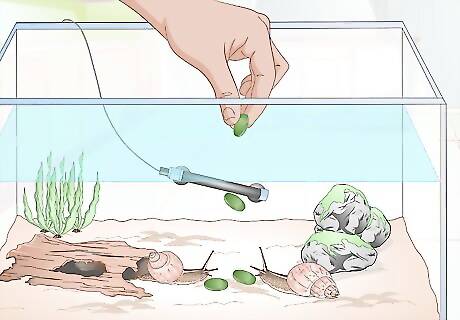
Feed your snail food that it likes. Freshwater snails are omnivores and typically eat the algae and food debris in an aquarium. If you don’t have fish in your aquarium, you can feed your snail algae discs. These are small bits of algae that your snail can eat. Algae discs are readily available online or at most pet stores. Other foods your snail might enjoy include small bits of shredded lettuce or blanched veggies like zucchini squash. The frequency you need to feed your snail depends on its species. Talk to your veterinarian with specific concerns about how often your snail needs to be fed.
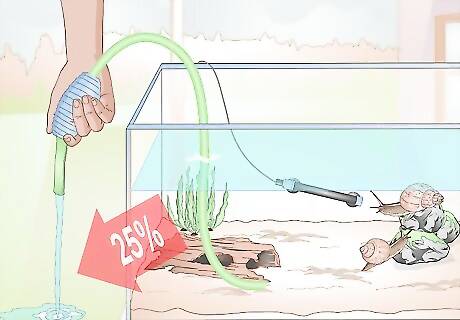
Keep the water clean. Check the water’s pH levels and temperature at least once per week, and adjust them as needed. Check your filter each day to ensure it is operating properly. Once each week, remove 25% of your tank’s water, and replace it with new water. For instance, if your tank holds eight gallons, once each week, you should remove two gallons, and add two gallons of new freshwater.
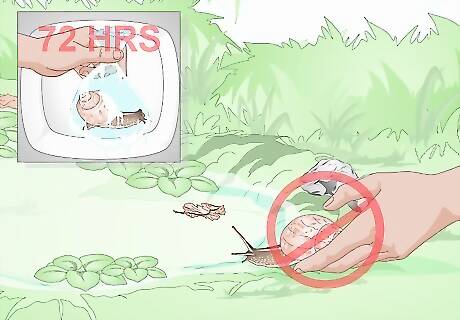
Dispose of your snail properly. If your snail dies or if you can no longer care for it, you should use care to dispose of it properly. The best option to get rid of a snail you can no longer care for is to sell it or give it to someone who can care for it. You should never release a pet snail into the wild. Some types of snails are considered pests and can disrupt the ecosystems they’re introduced to. If your snail dies, place it in two sealed plastic bags along with any eggs you might want to dispose of. Freeze the lot for at least 72 hours at a temperature at or below -20°Fahrenheit (-29°C). Alternately, you can dispose of the snail with a medical or biohazard waste company.



















Comments
0 comment